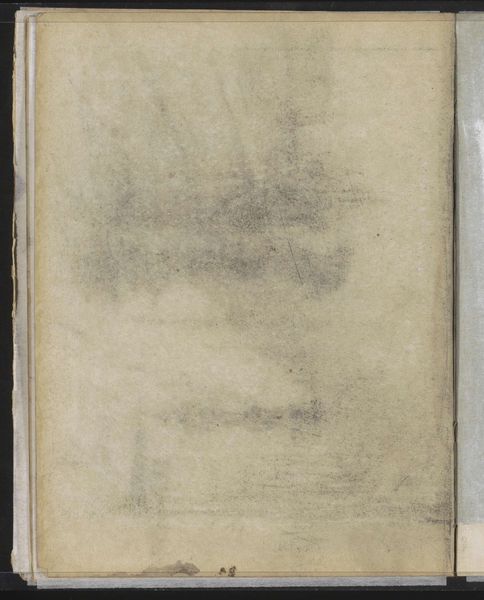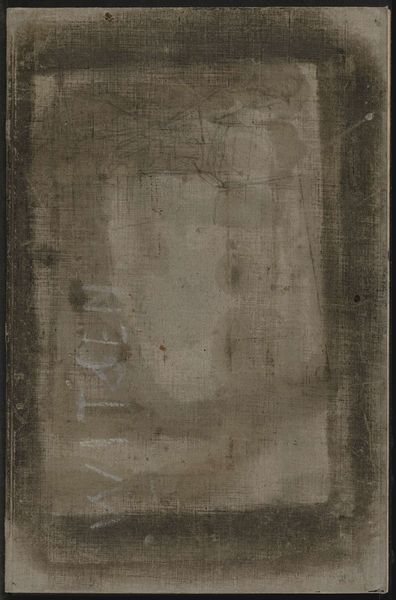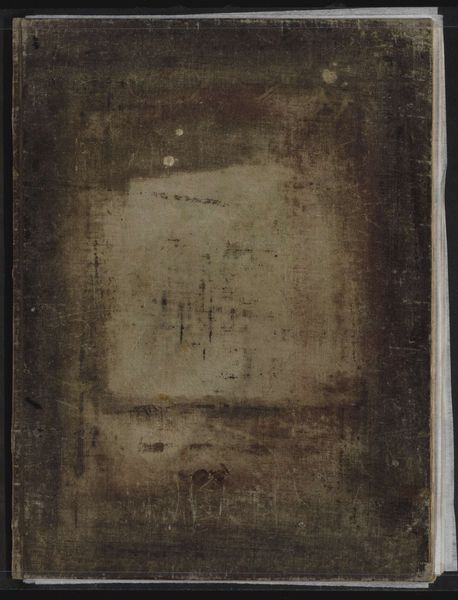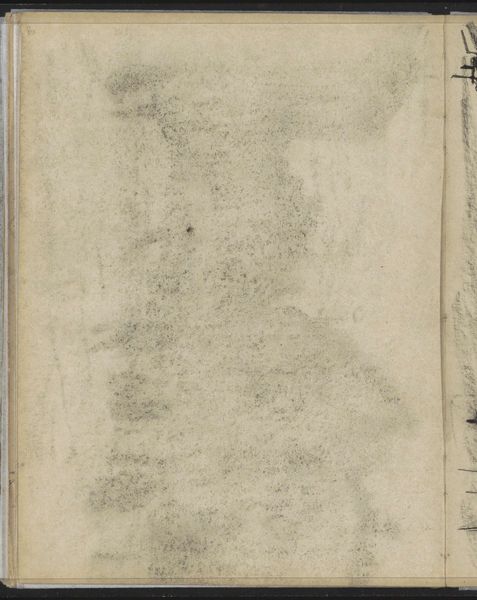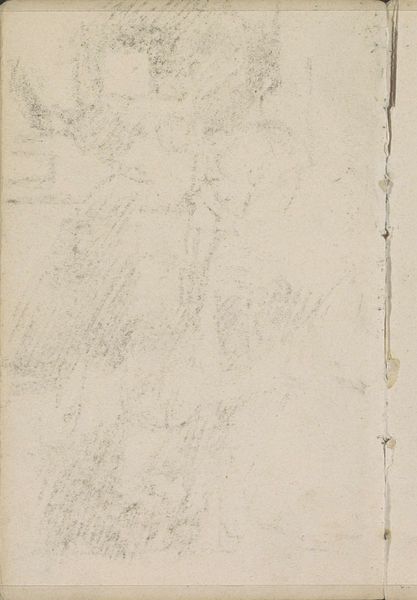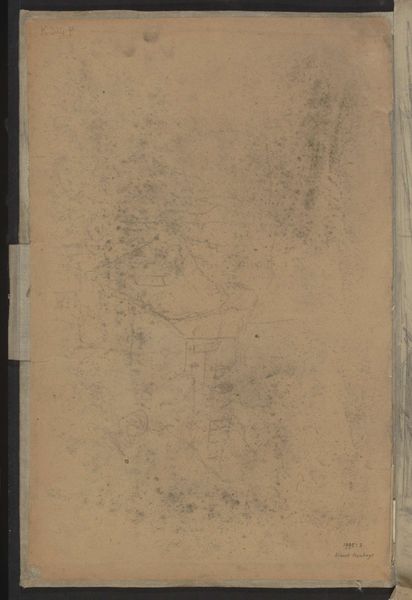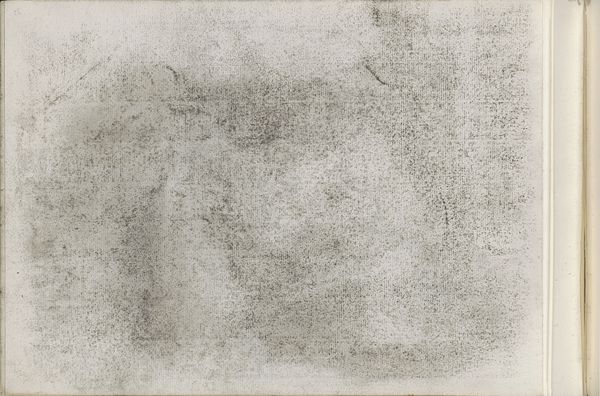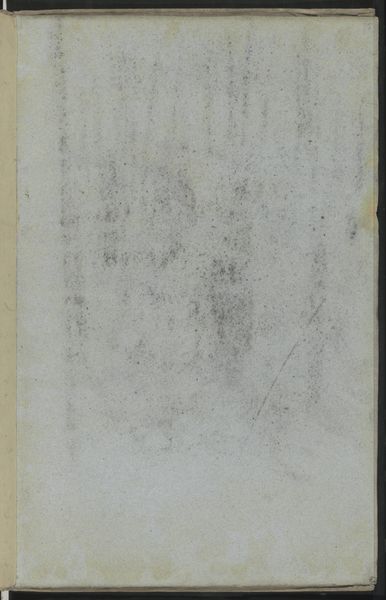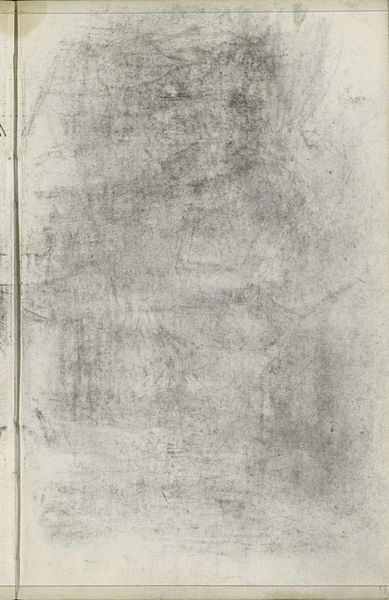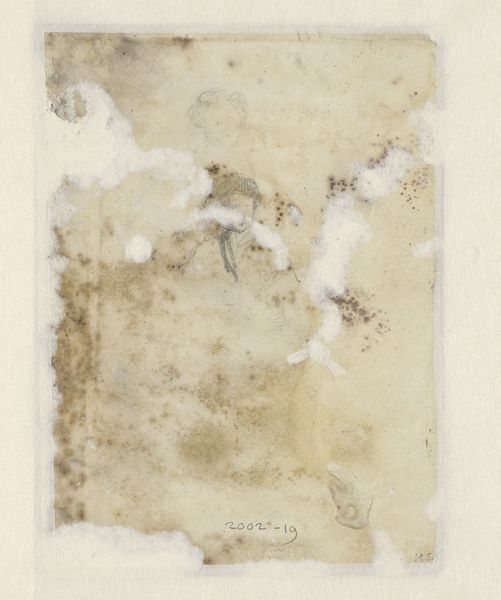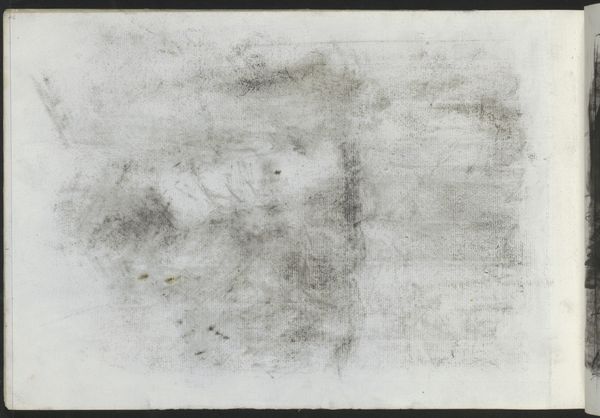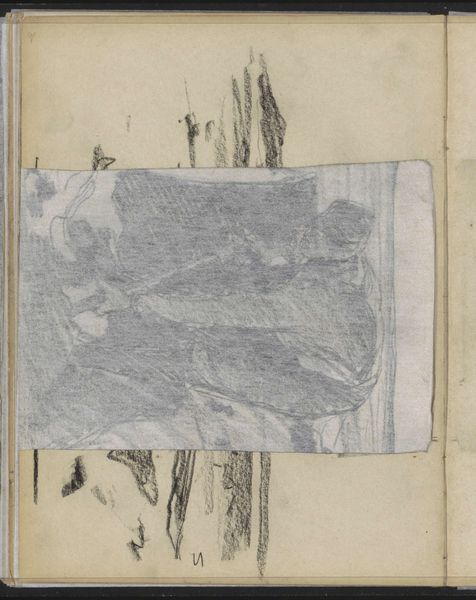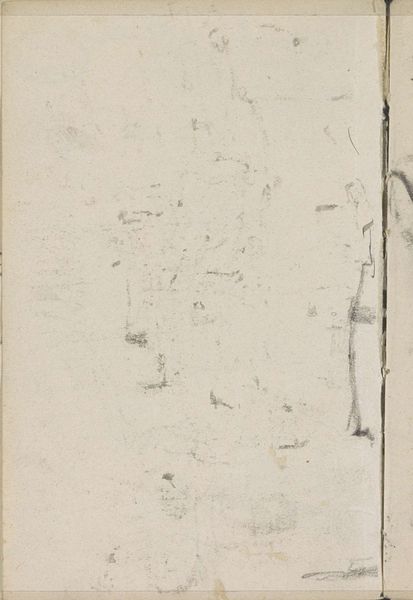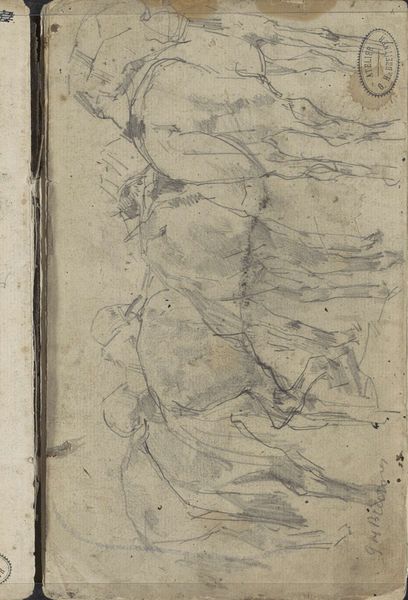
drawing, coloured-pencil, paper
#
drawing
#
coloured-pencil
#
impressionism
#
landscape
#
paper
#
coloured pencil
Copyright: Rijks Museum: Open Domain
Curator: This muted landscape by George Hendrik Breitner, titled "Studie," dates from approximately 1881 to 1886. It's crafted with colored pencil on paper and held in the collection of the Rijksmuseum. Editor: My first thought? Bleak. It looks like a faded memory. There's this overall wash of gray, punctuated by darker smudges, and just a ghost of a landscape trying to emerge. The brown stains near the edges make it feel fragile, like something found tucked away in an attic. Curator: That fragility reflects Breitner's approach to realism. He wasn't aiming for grand statements; he wanted to capture fleeting moments. Breitner felt art academies of the time alienated art and made his commitment to depicting ordinary life controversial. His focus on sketches like this as ends in themselves rather than mere preparation for other pieces, underscores the shift away from academic rigidity towards more Impressionistic spontaneity in Holland at this time. Editor: The sparseness really speaks to me. It evokes this powerful sense of transience and how experiences, like landscapes, can be half-forgotten, blurred. This one almost communicates loss, maybe connected to broader societal change through its subdued tones; were similar muted colors frequently linked with a cultural theme? Curator: Certainly. We know he frequented working-class areas and depicted the harsh realities of urban life in Amsterdam at the time, often documenting themes like poverty. While this is landscape rather than the more frequently explored urban environment, that aesthetic certainly carries over, hinting at hardship, even perhaps desolation of land or people, though nothing conclusive of course, given how simple it appears on first glance! The urban areas had been struggling through periods like that, but rural spaces were always upheld. Is Breitner hinting at a breakdown of idealized values here? Editor: Perhaps the very form of it indicates loss – the way the image is consumed and disintegrates on the canvas in this style of decay almost presents itself like an ephemeral echo or phantom feeling, especially as the paper decays and marks, almost obscuring it completely; perhaps symbolic as the Dutch begin to face a darker more troubled world? Curator: Indeed. Looking at this "Studie" through the lens of history, we gain some idea of just what this piece conveys. It’s quite moving once the sociopolitical themes start to emerge; a powerful expression given the artist was not initially welcomed in social commentary via the academic route! Editor: Yes, it's no longer just an old sketch, but a quiet, forceful commentary on a nation questioning the meaning and purpose of change within itself.
Comments
No comments
Be the first to comment and join the conversation on the ultimate creative platform.
